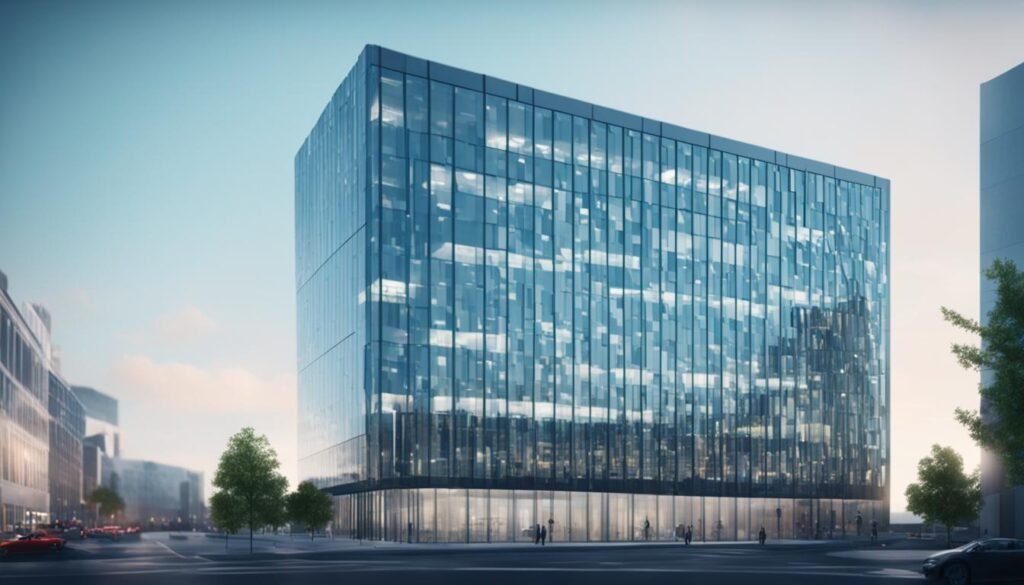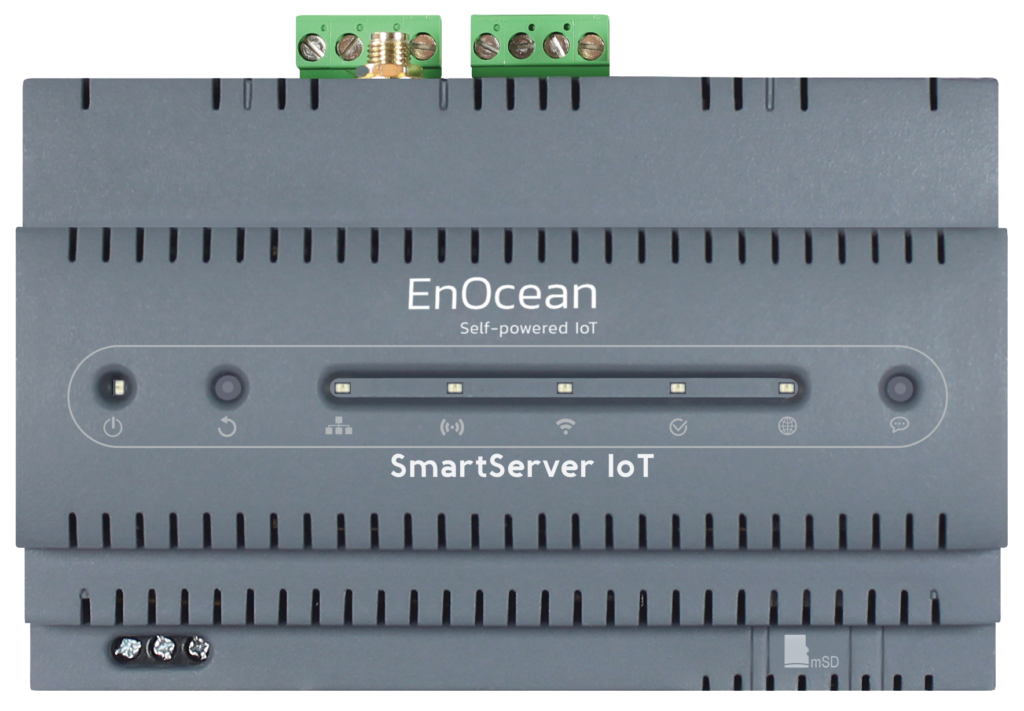
Case Study: Advanced Building Management System (BMS) Integration at Artemis House
Artemis House, an office building located in Edinburgh, Scotland, underwent a significant upgrade to its Building Management System (BMS) with the objective of enhancing space utilization, energy efficiency, and overall building performance. This case study explores the implementation of innovative wireless sensor technologies and the successful integration with the existing BMS infrastructure.
Project Objectives
The primary goals for the Artemis House BMS upgrade were:
- Optimizing Space Utilization: Understanding the usage patterns of various office spaces to ensure efficient allocation.
- Improving Energy Efficiency: Reducing energy consumption through smarter control of heating, ventilation, and air conditioning (HVAC) systems.
- Enhancing Building Performance: Providing a comfortable and productive environment for occupants while minimizing operational costs.
Technology Implementation
To achieve these objectives, the project team deployed an array of advanced wireless sensors across the building. These sensors were strategically placed to gather data on various parameters, including occupancy, temperature, humidity, and light levels. The data collected by the sensors provided real-time insights into the building’s operational dynamics.
Key Components
- Wireless Occupancy Sensors: Installed in meeting rooms, open office areas, and other communal spaces, these sensors tracked the presence and movement of individuals. This data was crucial in analysing space utilization and optimizing HVAC operations based on actual occupancy patterns.
- Environmental Sensors: These sensors monitored temperature, humidity, and light levels, contributing to the efficient management of indoor climate and lighting systems.
- Gateway and Integration Modules: The sensors communicated wirelessly with gateways that interfaced with the existing BMS. The integration modules ensured seamless data flow and interoperability between the new sensors and the building’s legacy systems.
Data Utilization and Benefits
The sensor data was aggregated and analysed to provide actionable insights into building operations. The key benefits realized from this data-driven approach included:
- Enhanced Space Utilization: By understanding real-time and historical occupancy patterns, facility managers were able to optimize the use of office spaces, reallocating underused areas and improving overall space efficiency.
- Energy Savings: The integration allowed for precise control of HVAC systems, adjusting heating, cooling, and ventilation based on actual occupancy and environmental conditions. This resulted in significant energy savings and reduced utility costs.
- Improved Comfort and Productivity: Maintaining optimal indoor conditions contributed to a more comfortable and productive environment for building occupants, thereby enhancing their overall experience.
- Operational Efficiency: Automated adjustments and alerts enabled proactive maintenance and quicker response to any issues, ensuring smooth and efficient building operations.
Our Thoughts on Artemis House
The BMS integration at Artemis House is a testament to the transformative potential of advanced sensor technology in building management. By leveraging wireless sensors and sophisticated data analytics, the project successfully enhanced space utilization, improved energy efficiency, and elevated overall building performance.
The success at Artemis House serves as an inspiring example of what can be achieved with the right combination of innovation and strategic implementation in modern building management.
Beringar is a company specializing in advanced property technology solutions. They were involved in supplying Artemis House with innovative smart building systems, enhancing operational efficiency and sustainability. Their contributions include advanced sensors and analytics tools to optimize energy usage and building management.

EnOcean’s SmartServer IoT is an advanced platform designed for building automation and smart city applications. It integrates various IoT devices and protocols, providing centralized control, monitoring, and data analytics to optimize energy efficiency, enhance operational performance, and enable seamless communication between devices.
Why Use SmartServer?
Commercial buildings waste about 30% of their energy. This shows the big need for better building management. EnOcean’s SmartServer is here to change how we look after and improve our buildings.
SmartServer makes server management in buildings smarter. It combines new IoT tech with older systems. This makes our internet and data systems in buildings work better. SmartServer was created to make things more efficient, cut costs, and make operations smooth in the world of real estate.
Their new solution links modern IoT tech with old building systems. It offers a safe place for data and services. Now, with SmartServer, Holders Technology are leading a change in how we run our buildings.
Revolutionising Building Management with EnOcean’s SmartServer IoT
Building management is changing a lot. Flexible work patterns and a big push for green choices are making a difference. We’re working hard to make our places better for both work and the planet.
The Challenge of Modern Building Management
Buildings today face many challenges and need to become more adaptable to change. They should keep up with how many people are there and use resources well. We’re moving towards smart systems that can predict when something might need fixing and make adjustments instantly, also known as ‘predictive maintenance’. The aim is to create places that boost productivity, cut costs and are eco-friendly.
Integrating IoT Technologies with Legacy Systems
Upgrading old buildings is tough. They often can’t talk to the new smart gadgets. This makes it hard to use the latest technology for better building management. As a result, there’s clearly a roadblock in making buildings smarter, at least for the time being.
SmartServer IoT: Bridging the Gap
Enter EnOcean’s SmartServer IoT. It’s a clever solution for mixing old and new systems. With it, you get a single focal point where all data converges. A single SmartServer unit can handle up to 10,000 data points, making it perfect for big projects.
The tech in SmartServer IoT, like the IoT Access Protocol, helps a lot. It turns different data into a standard form. Then, it pretends to be a part of the building system, which makes reading and using the data simple. This starts the path towards buildings that take care of their own issues and allows them to make smarter choices.
SmartServer IoT bridges the divide between old and new. It’s pushing buildings into the future. Now they can change and grow as we need them to, while being kinder to our planet.
Key Features and Benefits of SmartServer
EnOcean’s SmartServer changes how we manage buildings. It uses serverless computing technology for greater performance.
Seamless Integration of Multiple Protocols
SmartServer connects many systems well. It links different protocols for devices and networks to talk smoothly. This is key for a smart building to work as one.
Real-time Data Aggregation and Normalisation
It gathers and processes data instantly. It makes data from different sources easy to understand. So, you can quickly make smart choices.
Scalability and Flexibility
SmartServer can expand with your needs. It works with up to 100 devices per server, from small to large buildings. So, it remains useful as your space grows. The clever mix of energy harvesting wireless, self-powered sensors, and batteryless wireless technology with the IoT gateway of the EnOcean SmartServer sets up a brilliant smart system. It’s all based on open standards, offering great ways to keep an eye on and control the building’s tech. This leads to smarter decisions and better building automation.
Feature | Benefit |
Seamless integration of LoRaWAN multi-sensor platform with BMS | Enables the deployment of enocean smartserver, energy harvesting wireless, and self-powered sensors within the building automation system |
Common data layer and services | Facilitates the integration of new IoT technologies with legacy building automation protocols, creating an interoperable smart home system |
Normalised data presentation to BMS | Allows the BMS to understand and incorporate the data from battery-less wireless technology to control various building systems |
IoT gateway functionality | Enables remote monitoring and management of the entire system, supporting data-driven intelligent decisions and sustainable automation strategies |
Enhanced Energy Efficiency and Cost Savings
SmartServer makes buildings more energy efficient by adjusting systems to real use. For example, it changes air in rooms depending on how many people are there at any given time. Suffice to say, it saves a lot of energy and money.
The IoT Access Protocol (IAP) is crucial for SmartServer. It allows:
- Data abstraction
- Messaging services
- Control services
IAP sets APIs with MQTT and REST for easy local and remote app communication. It makes the system more adaptable and simpler to operate.
Conclusion
EnOcean’s SmartServer IoT is changing how we manage our buildings. It joins new IoT tech with our current systems. This lets building owners see what’s happening in real time and make the best decisions. It helps them run things more efficiently and is kinder to the planet
It has worked well in many places like NHS estates and commercial offices. By using SmartServer to bridge the gap between old and new, it has made work smoother and reduced how much CO2 we produce. SmartServer IoT also lets us see our buildings like never before thanks to its data abstraction abilities. It’s making building management efficient and green. By connecting old ways with new IoT, it’s ready for the buildings of the future.
FAQ
What is SmartServer IoT?
SmartServer IoT is a new way to manage buildings. It makes it easy to add new tech, like LoRaWAN, to older systems. This lets everything work together smoothly and securely.
What are the challenges of modern building management?
Workplaces are changing, and we are working towards being greener. But, adding new tech to old systems is hard.
How does SmartServer IoT address these challenges?
SmartServer IoT makes different systems talk to each other. It handles lots of devices smoothly. It uses a smart method, IAP, to make this happen.
What are the key features of SmartServer IoT?
It connects many tech types, collects data in real-time, and works for many devices together. This system makes buildings work better, saving energy and money.
How does SmartServer IoT improve energy efficiency?
It looks at how many people are in a room and adjusts the air accordingly. This simple step saves a lot of energy.
What is the IoT Access Protocol (IAP)?
IAP is a set of rules for tech to communicate. It makes it easier for different systems to share data and work together.
Where has SmartServer IoT been implemented successfully?
It’s been used in health services and business offices. It makes things run smoother and helps the planet by using less energy.